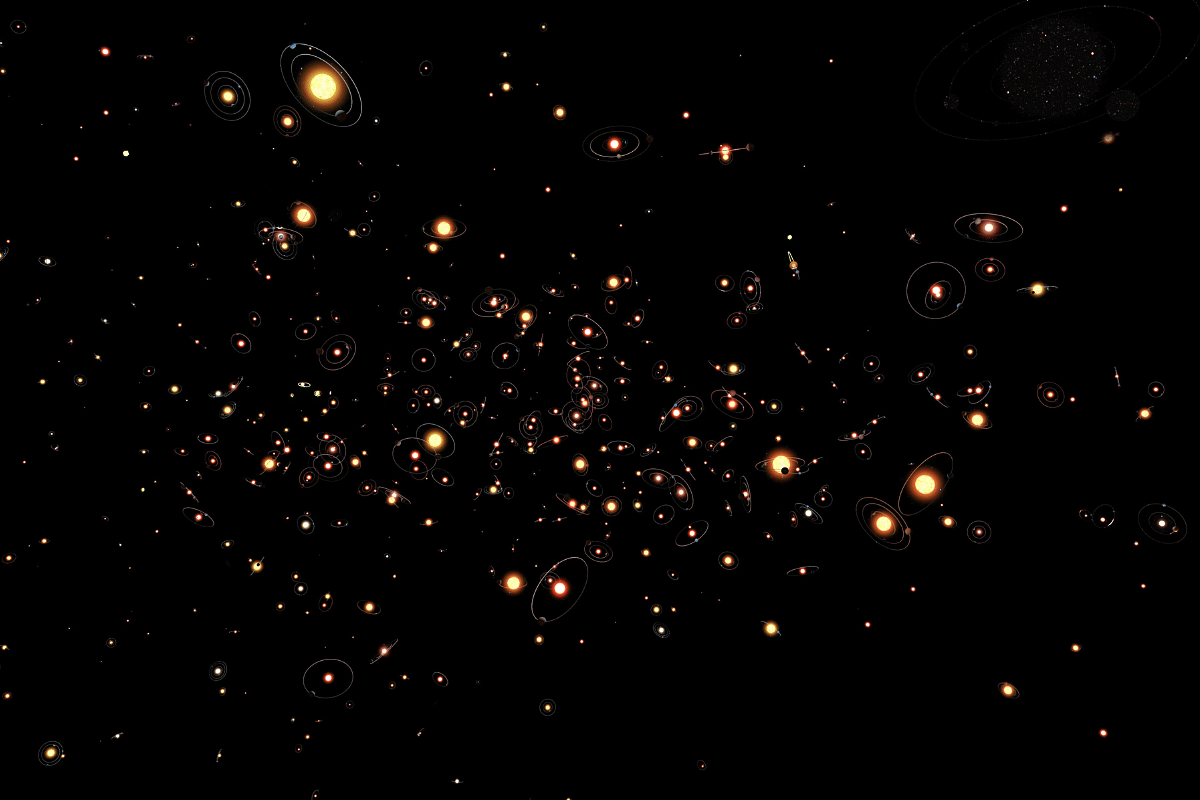Science
Over 300 Exoplanets Were Confirmed In Milestone Year 2022 When The 5,000 Mark Was Crossed
- The count of confirmed exoplanets ticked past the 5,000 mark in March this year with the addition of a large batch of 65 exoplanets to the official archive.
- The end-2022 tally is 5,235.

This artist’s cartoon view gives an impression of how common planets are around the stars in the Milky Way. (Photo: ESO/M. Kornmesser)
From 4,904 at the end of 2021, the confirmed exoplanet tally at the end of 2022 stands at an impressive figure of 5,235. That’s an increase of 331 confirmed exoplanets this year alone.
An exoplanet, or extrasolar planet, is any planet outside our solar system. The five exoplanet types are Neptune-like, gas giant, super Earth, terrestrial, and unknown.
Notably, this rise of 331 over a year was met with a special high point in March 2022: 5,000 confirmed exoplanets.
The count of confirmed exoplanets ticked past the 5,000 mark on 21 March with the addition of a large batch of 65 exoplanets to the official archive.
The Exoplanet Archive maintained by the National Aeronautics and Space Administration (NASA) gets updated when a discovery comes through from peer-reviewed scientific papers and after having been confirmed using multiple detection methods or by analytical techniques.
Exoplanet discoveries began in 1992. Three planets going around a type of neutron star called a “pulsar” were the first-ever planets to be discovered outside our solar system.
The first planet detected around a Sun-like star came three years later, in 1995.
The latest exoplanet discovered is a gas giant exoplanet, HD 29399 b, orbiting a K-type star. It was detected using the radial velocity technique.
Most exoplanets are discovered with the transit method, which uses the periodic dimming of the light of a star by the planet(s) orbiting it, to make a determination. The other three planet-hunting methods are gravitational microlensing, direct imaging, and astrometry.
The Milky Way galaxy, where the Earth resides, is said to likely hold hundreds of billions of exoplanets. The Milky Way is only one of about 200 billion galaxies estimated to be in the observable universe.
The James Webb Space Telescope, which was a scientific highlight of 2022, holds great promise for exoplanet discovery.
Thanks to Webb, there was, for the first time ever, clear evidence of carbon dioxide in the atmosphere of an exoplanet this year. It also marked Webb's first official scientific observation of an exoplanet.
Webb doesn’t have to lift all the burden in the future, though. Besides powerful ground-based telescopes, new exoplanet discoveries can be expected from the Nancy Grace Roman Space Telescope, set for launch in 2027, and the European Space Agency mission ARIEL, launching in 2029.
Also Read:
Support Swarajya's 50 Ground Reports Project & Sponsor A Story
Every general election Swarajya does a 50 ground reports project.
Aimed only at serious readers and those who appreciate the nuances of political undercurrents, the project provides a sense of India's electoral landscape. As you know, these reports are produced after considerable investment of travel, time and effort on the ground.
This time too we've kicked off the project in style and have covered over 30 constituencies already. If you're someone who appreciates such work and have enjoyed our coverage please consider sponsoring a ground report for just Rs 2999 to Rs 19,999 - it goes a long way in helping us produce more quality reportage.
You can also back this project by becoming a subscriber for as little as Rs 999 - so do click on this links and choose a plan that suits you and back us.
Click below to contribute.
Latest